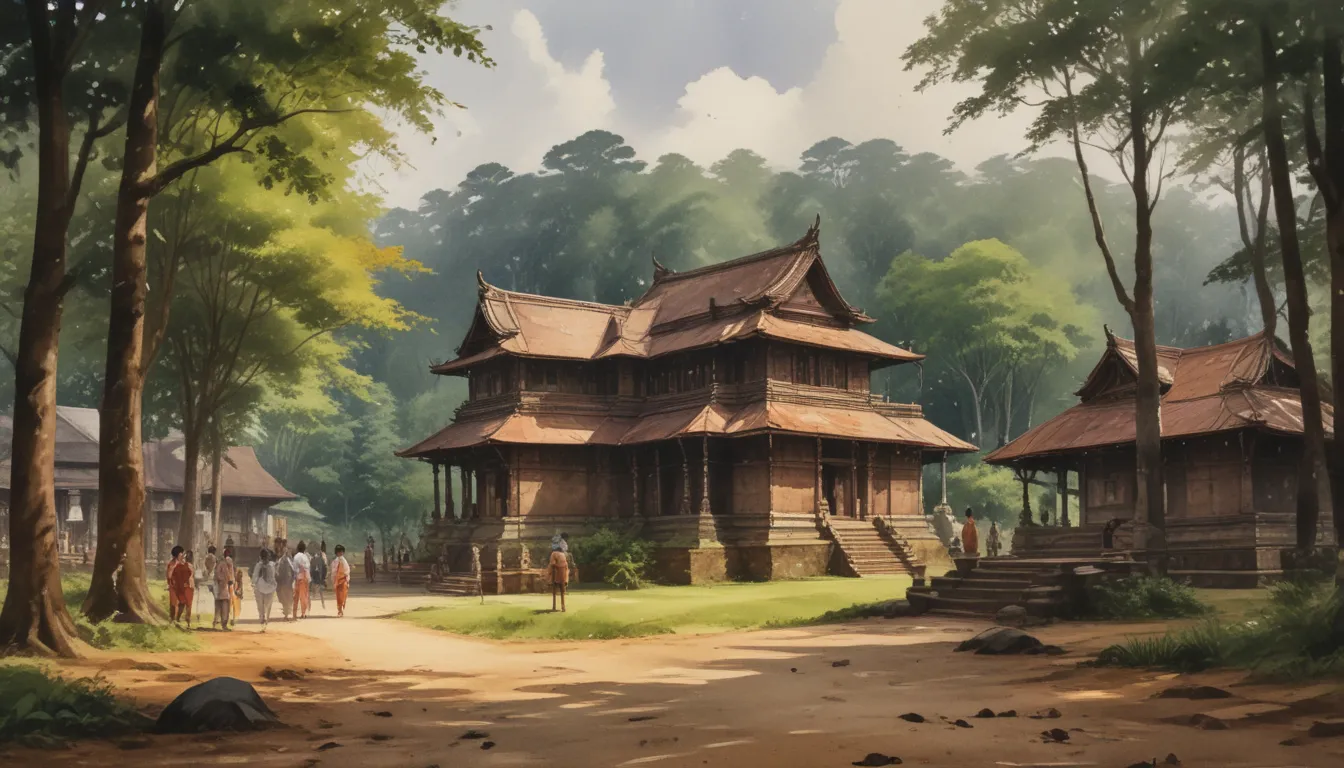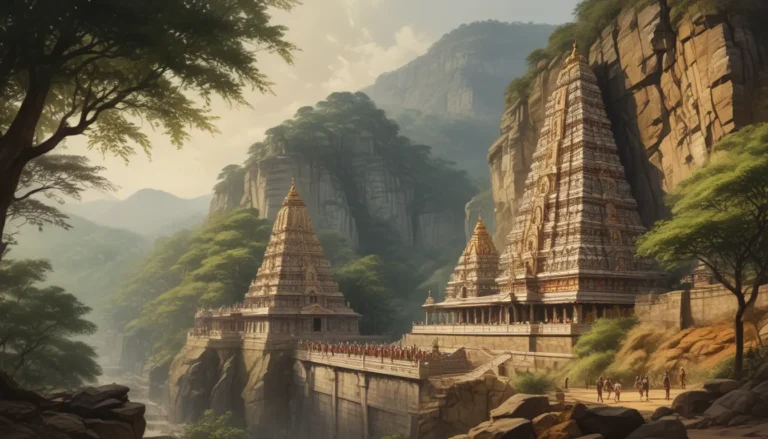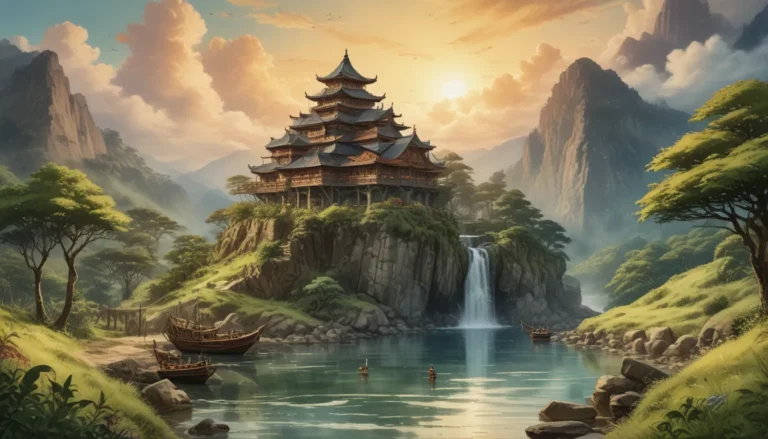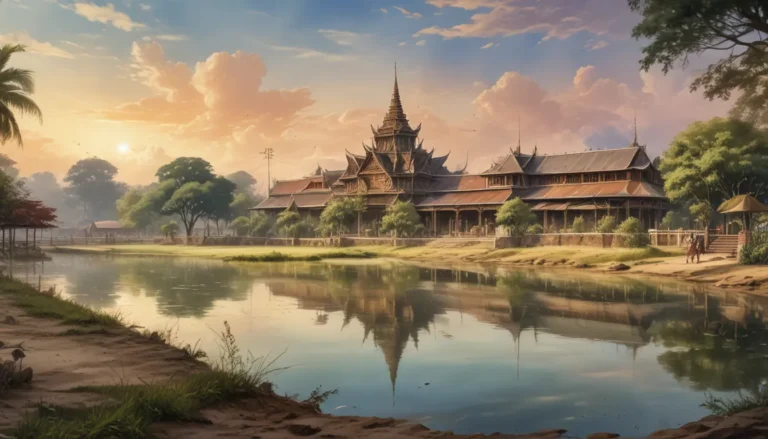The images in our articles are for illustrative purposes only and may not exactly match the content. They are intended to capture your interest and complement the text, not to replace it.
Welcome to the realm of divine reverence and cultural wonders as we embark on a captivating journey through India’s rich spiritual heritage. In this exploration, we will delve into the extraordinary facts surrounding Dharmasthala Manjunatha Temple, a beacon of faith and philanthropy located in the serene village of Dharmasthala, Karnataka, India. From its historical significance to its inclusive rituals and charitable initiatives, this temple stands as a testament to the unity and harmony at the core of Indian spirituality.
The Temple of Beliefs
The Dharmasthala Manjunatha Temple is not just a place of worship; it is a symbol of faith, unity, and devotion. Dedicated to Lord Shiva and housing a sacred idol of Lord Manjunatha, the temple holds immense significance for millions of devotees who visit it every year. Believed to be self-manifested, the idol embodies the spiritual aura that attracts people from far and wide.
A Temple for All Religions
One of the most remarkable aspects of the Dharmasthala Manjunatha Temple is its inclusivity. Unlike many other religious sites, this temple welcomes people from all faiths to come together and offer prayers. It serves as a shining example of religious harmony, emphasizing the unity that lies at the core of Indian spirituality. Here, individuals of diverse beliefs can find solace and connect with the divine.
Preserved for Centuries
With a rich historical and cultural heritage dating back to the 16th century, the Dharmasthala Manjunatha Temple has been remarkably well-preserved over the years. The temple complex comprises various structures, including the main sanctum, shrines, and prayer halls, all reflecting the architectural grandeur of ancient Indian temples. Visitors can witness the intricate carvings and sculptures that adorn the temple, each telling a unique story of tradition and spirituality.
The Sacred Rituals
Every day, the temple conducts a series of rituals and ceremonies to honor Lord Manjunatha. These sacred practices, including Abhisheka, Archana, and Aarti, create a deep connection between devotees and the divine. By participating in these rituals, visitors can experience a sense of spiritual fulfillment and community, fostering a shared bond of devotion and reverence.
A Treasure Trove of History
Within the temple premises lies a museum that showcases a wide range of artifacts and historical relics. From ancient scriptures and manuscripts to intricate sculptures, the museum offers a glimpse into the temple’s rich history and cultural significance. Visitors can explore these artifacts, gaining insights into the traditions and values that have shaped the temple over centuries.
The Nurturing Hands of Dharmadhikari
For over eight centuries, the Dharmasthala Manjunatha Temple has been managed by the Heggade family, with the head of the family serving as the Dharmadhikari. This hereditary trustee oversees the temple’s affairs and is revered for their commitment to philanthropy and social welfare. Through charitable initiatives and community programs, the Dharmadhikari has played a pivotal role in transforming Dharmasthala into a pilgrimage center of faith and service.
Helping the Needy
Central to the temple’s philosophy is the principle of service to humanity. Through various charitable initiatives, the Dharmasthala Manjunatha Temple provides free meals to thousands of devotees daily, operates hospitals and educational institutions, and organizes social welfare programs. This focus on philanthropy has transformed the temple into a beacon of hope for those in need, embodying the spirit of compassion and benevolence.
The Majestic Gommateshwara Statue
Standing close to the Dharmasthala Manjunatha Temple is a colossal statue of Bahubali, also known as Gommateshwara. This towering statue, measuring about 39 feet in height, is a prominent landmark of Dharmasthala, symbolizing spiritual grandeur and architectural marvel. Visitors flock to admire the statue’s magnificence, experiencing a sense of awe and reverence in its presence.
Symbol of Religious Tolerance
In a world often divided by religious differences, the Dharmasthala Manjunatha Temple stands as a symbol of religious tolerance and acceptance. By embracing people of all beliefs and backgrounds, the temple promotes unity and love for fellow human beings, transcending the barriers that often separate communities. It serves as a reminder that spirituality knows no boundaries, fostering a sense of inclusivity and harmony.
Festival Extravaganza
The Dharmasthala Manjunatha Temple is renowned for its vibrant and grand festivals that captivate devotees from all corners of the country. Festivities such as the Lakshadeepotsava and Navaratri celebrations fill the temple with music, dance, and elaborate rituals, creating an atmosphere of joy and devotion. These celebrations offer devotees a chance to deepen their spiritual connection and partake in the vibrant cultural heritage of the temple.
A Pilgrimage of Faith
For millions of devotees, the Dharmasthala Manjunatha Temple holds a special place as a must-visit pilgrimage site. People from far and wide journey to the temple, seeking solace, blessings, and spiritual enlightenment. The serene ambience and divine atmosphere of the temple create a unique space for personal reflection and connection with the divine, making it a place of profound spiritual significance.
Conclusion
In conclusion, the Dharmasthala Manjunatha Temple stands as a truly remarkable landmark that embodies religious significance, historical importance, and architectural splendor. From its inclusive practices to its charitable endeavors, every aspect of the temple reflects a deep sense of devotion and spirituality. As visitors explore this extraordinary site, they are invited to appreciate the beauty and significance of this sacred place, immersing themselves in a journey of faith and enlightenment.
FAQs
- What is the history of Dharmasthala Manjunatha Temple?
-
The temple has a rich history dating back over 800 years, built by the Jain chieftain Birmanna Pergade and later managed by the Heggade family as hereditary trustees.
-
What makes the architecture of Dharmasthala Manjunatha Temple unique?
-
The temple showcases Dravidian style architecture with intricate stone carvings and sculptures, depicting mythological stories and religious narratives.
-
What social welfare activities does the temple undertake?
-
The temple is renowned for its commitment to social welfare, running hospitals, educational institutions, free hostels, and providing free meals to thousands of devotees and visitors daily.
-
Is the temple open to all visitors and devotees?
-
Yes, the temple welcomes people of all religions and beliefs, promoting inclusivity, harmony, and a shared spiritual experience.
-
What festivals are celebrated at the temple?
- The temple hosts various festivals and rituals throughout the year, including the grand Lakshadeepotsava festival, where thousands of oil lamps illuminate the temple premises in a mesmerizing display of devotion.
Embark on a journey of spiritual discovery and cultural immersion at the Dharmasthala Manjunatha Temple, where ancient traditions and modern-day practices converge to create a space of devotion and unity. Experience the transformative power of faith, explore the depths of spirituality, and witness the enduring impact of this extraordinary landmark on the lives of millions. Join us in celebrating the beauty and significance of this sacred site as we pay homage to the profound legacy of Indian spirituality.






